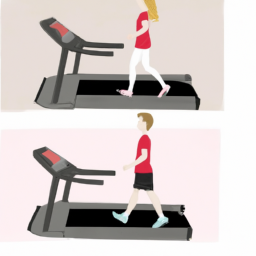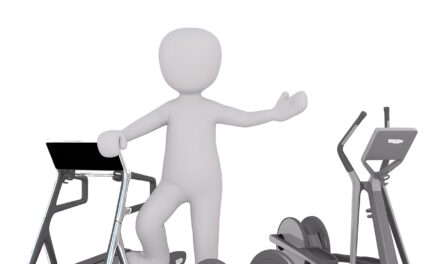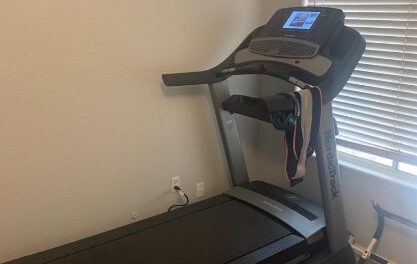Are you looking to maximize the effectiveness of your treadmill workouts? Look no further! In this article, we will explore the incredible benefits of incline and decline features on a treadmill. Whether you’re aiming to burn more calories, increase muscle tone, or simulate outdoor conditions, these features can take your workout to the next level. Get ready to elevate your fitness routine and achieve your goals with the help of incline and decline features on a treadmill.
1. Benefits of Incline and Decline Features
When it comes to enhancing your treadmill workouts, incorporating incline and decline features can offer a multitude of benefits. Not only do these features increase the difficulty of your workouts, but they also target different muscle groups, improve cardiovascular endurance, burn more calories, simulate outdoor terrain, improve balance and stability, reduce impact on joints, provide versatility for varied workouts, increase mental engagement, and accommodate users with different fitness levels.
1.1 Increased Difficulty
One of the key advantages of incline and decline features on a treadmill is the ability to increase the difficulty of your workouts. By adjusting the incline level, you can mimic the challenge of uphill climbs, engaging more muscles and intensifying your workout. Similarly, utilizing the decline feature can add a new level of difficulty by simulating downhill descents. Increasing the difficulty of your workouts not only tests your physical capabilities but also allows for continuous progression and improvement.
1.2 Targeting Different Muscle Groups
The incline and decline features on a treadmill are not solely for making your workouts more challenging. They also provide a unique opportunity to target different muscle groups. When you raise the incline, the emphasis shifts to your glutes, quadriceps, and calves as they work harder to propel you uphill. On the other hand, lowering the incline or utilizing the decline feature places more emphasis on your hamstrings and hip extensors. By incorporating these variations into your treadmill routine, you can effectively engage and strengthen a wider range of muscles.
1.3 Enhancing Cardiovascular Endurance
Cardiovascular endurance is a crucial aspect of overall fitness, and incline and decline features can help you improve it. When you raise the incline on a treadmill, your heart rate increases as your body works harder to overcome the resistance. This continuous effort strengthens your cardiovascular system, leading to improved endurance over time. Additionally, the variability provided by these features contributes to more comprehensive cardiovascular training, making your heart and lungs more efficient in delivering oxygen to your muscles.
1.4 Burning More Calories
If burning calories is your fitness goal, then incorporating incline and decline features on a treadmill is a smart choice. When you walk or run on an incline, your body instantly expends more energy, leading to increased calorie burn. The greater the incline, the more calories you’ll burn per minute. Similarly, utilizing the decline feature can also contribute to calorie expenditure as your body works to control your descent. By adding these variations to your workouts, you can maximize the calorie-burning potential of your treadmill sessions.
1.5 Simulating Outdoor Terrain
Not everyone has access to scenic outdoor trails or challenging terrains, but with the incline and decline features on a treadmill, you can simulate these experiences indoors. By adjusting the incline level, you can replicate the feeling of climbing hills, allowing you to train for outdoor hikes or trail runs. Similarly, the decline feature provides a unique opportunity to simulate downhill descents, giving you a taste of what it’s like to conquer varying terrains. This simulation of outdoor terrain not only adds excitement to your workouts but also prepares you for real-world challenges.
1.6 Improving Balance and Stability
Maintaining balance and stability is vital in any fitness routine, and incline and decline features promote their improvement. When you walk or run on an incline, your core and stabilizing muscles are engaged to a greater extent. These muscles work together to maintain your balance and stability while combating the challenging incline. Similarly, utilizing the decline feature requires your body to adapt and stabilize, further enhancing your balance skills. Incorporating these features into your treadmill workouts can lead to improved overall balance and stability.
1.7 Reducing Impact on Joints
High-impact exercises can put a strain on your joints, but with the incline and decline features on a treadmill, you can minimize this risk. When you walk or run on an incline, the impact on your knees and ankles is reduced compared to running on a flat surface. The incline absorbs some of the shock, allowing for a more joint-friendly workout. Similarly, utilizing the decline feature can help distribute the impact evenly throughout your body, decreasing the strain on specific joints. If you’re looking for a low-impact workout option, utilizing the incline and decline features on a treadmill is a perfect choice.
1.8 Versatility for Varied Workouts
One of the greatest advantages of treadmill workouts with incline and decline features is the versatility it provides. Whether you prefer walking, jogging, running, or high-intensity interval training (HIIT), these features can be incorporated into a wide range of workout styles. By adjusting the incline and decline levels, you can customize your workouts to suit your preferences and fitness goals. From endurance training to interval sprints, the versatility of these features allows for a stimulating and varied exercise routine.
1.9 Increased Mental Engagement
Keeping your mind engaged during workouts is crucial to stay motivated and avoid boredom. Incline and decline features on a treadmill can greatly contribute to increased mental engagement. The challenge of tackling inclines or declines requires your full focus, keeping your mind connected to your body’s movements. This heightened attention and engagement make your workouts more exciting and enjoyable. Additionally, adjusting the incline or decline levels throughout your workout keeps your mind actively involved, providing a consistent mental stimulus.
1.10 Accommodating Users with Different Fitness Levels
Fitness goals and capabilities vary among individuals, and the incline and decline features on a treadmill help accommodate users with different fitness levels. For beginners, utilizing the features at lower levels can provide a less intense but still effective workout. As you progress and build endurance, you can gradually increase the incline or decline to further challenge yourself. Advanced users can push their limits by incorporating steep inclines and declines, ensuring constant progression and improvement. Regardless of your fitness level, these features offer a customizable and inclusive workout experience.
2. Muscle Engagement and Activation
When utilizing the incline and decline features on a treadmill, specific muscle groups are selectively engaged and activated. This targeted activation can help you maximize muscle development and overall strength.
2.1 Glute Activation
Increasing the incline level on a treadmill is an excellent way to engage and activate your glute muscles. As you walk or run uphill, your glutes are constantly working to lift and extend your legs. This repetitive movement targets your gluteus maximus, gluteus medius, and gluteus minimus, helping you sculpt and strengthen your buttocks.
2.2 Quadriceps Activation
Quadriceps, the large muscles on the front of your thighs, play a significant role in propelling your body forward when walking or running. By raising the incline, you increase the workload on your quadriceps as they work harder to lift your body against gravity. The increased activation of these muscles leads to improved strength and endurance in your quadriceps.
2.3 Hamstring Activation
While incline settings primarily target your quadriceps, they also activate your hamstrings to a certain extent. During uphill climbs, your hamstrings act as synergists, assisting the quadriceps in knee extension. This coordinated effort engages your hamstrings, helping to strengthen and balance the muscles on the back of your thighs.
2.4 Calf Activation
Walking or running on an incline heavily recruits your calf muscles, particularly the gastrocnemius and soleus. These muscles play a vital role in ankle plantar flexion, allowing you to push off the ground with each step. By inclining the treadmill, you heighten the demand on your calf muscles, improving their strength and endurance.
2.5 Core Engagement
Maintaining a stable and upright posture is essential when exercising on an incline. This requires significant activation of your core muscles, including the rectus abdominis, obliques, and transverse abdominis. As you navigate uphill terrain, your core muscles work to stabilize your torso, preventing excessive leaning or swaying. Regular incline workouts contribute to a strong core and improved overall stability.
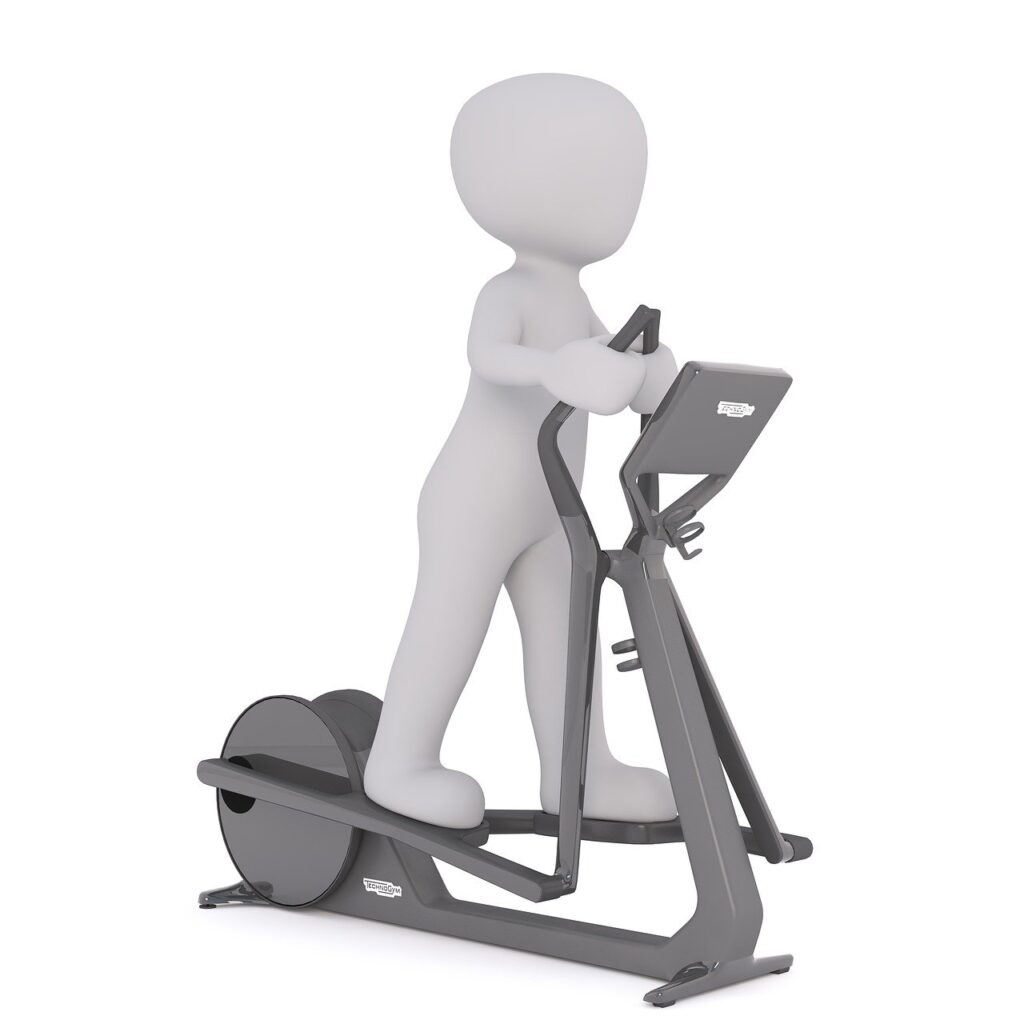
This image is property of pixabay.com.
3. Impact on Cardiovascular Endurance
In addition to the muscle engagement and activation, incline and decline features on a treadmill have a profound impact on cardiovascular endurance. These features push your heart and lungs to work harder, resulting in improved cardiovascular fitness.
3.1 Effective Heart Rate Training
By adjusting the incline or decline levels, you can effectively utilize heart rate training to enhance your cardiovascular endurance. Increasing the incline creates a higher demand for oxygen, forcing your heart to pump faster and your body to adapt to the increased workload. This sustained increase in heart rate during your workout promotes efficient cardiovascular conditioning and strengthens your heart muscle.
3.2 Improved Oxygen Consumption
When you walk or run on an incline, your body requires more oxygen to meet the demands of the increased workload. This increased oxygen consumption stimulates your respiratory system, encouraging it to become more efficient in delivering oxygen to your working muscles. Over time, improved oxygen uptake leads to enhanced endurance and reduced fatigue during physical activity.
3.3 Increased Stamina and Endurance
Regularly incorporating incline and decline features in your treadmill workouts can significantly increase your stamina and endurance. By consistently challenging your cardiovascular system, you gradually improve its capacity to provide oxygen-rich blood to your muscles. As a result, you’ll find yourself able to sustain higher intensities for longer durations and recover more quickly between intense efforts. This increased stamina and endurance not only benefit your treadmill workouts but also carry over to other physical activities.
3.4 Boosting HIIT (High-Intensity Interval Training) Efficiency
HIIT workouts are known for their effectiveness in burning calories and improving cardiovascular fitness. By combining high-intensity intervals with periods of active recovery, HIIT workouts maximize calorie expenditure and increase cardiovascular endurance. Incorporating incline and decline features on a treadmill allows you to take your HIIT sessions to the next level. By adjusting the incline and decline levels during the high-intensity intervals, you add an additional challenge, further elevating your heart rate and calorie burn.
4. Calorie Burning Potential
If your goal is to shed extra pounds, the incline and decline features on a treadmill can significantly contribute to your calorie burning potential. These features provide an effective way to ramp up your calorie expenditure and expedite weight loss.
4.1 Increased Calorie Expenditure
When you engage the incline feature on a treadmill, your body has to work against gravity, resulting in an increased energy expenditure. Walking or running uphill requires more effort compared to exercising on a flat surface, leading to a higher calorie burn. According to a study published in the Journal of Sports Science Medicine, walking on a 12% incline at a speed of 3.2 mph can burn up to 639 calories per hour for a 155-pound person. The steeper the incline and the faster the pace, the more calories you’ll burn.
4.2 EPOC (Excess Post-Exercise Oxygen Consumption) Effect
In addition to the immediate calorie burn during your treadmill workout, incline and decline feature can also elicit the EPOC effect. EPOC refers to the increase in oxygen consumption that occurs post-exercise as your body works to restore itself to its pre-exercise state. The EPOC effect leads to additional calorie burning even after you’ve completed your workout. By incorporating incline and decline variations, you can enhance this effect and maximize the post-workout calorie burn.
4.3 Efficient Weight Management
Consistent and effective calorie burning is essential for achieving and maintaining a healthy weight. The incline and decline features on a treadmill provide a valuable tool for managing your weight. By increasing your calorie expenditure and optimizing your metabolism, these features support weight loss efforts. Additionally, the variability and versatility offered by these features ensure that your workouts remain challenging and effective, enabling you to reach your weight management goals.
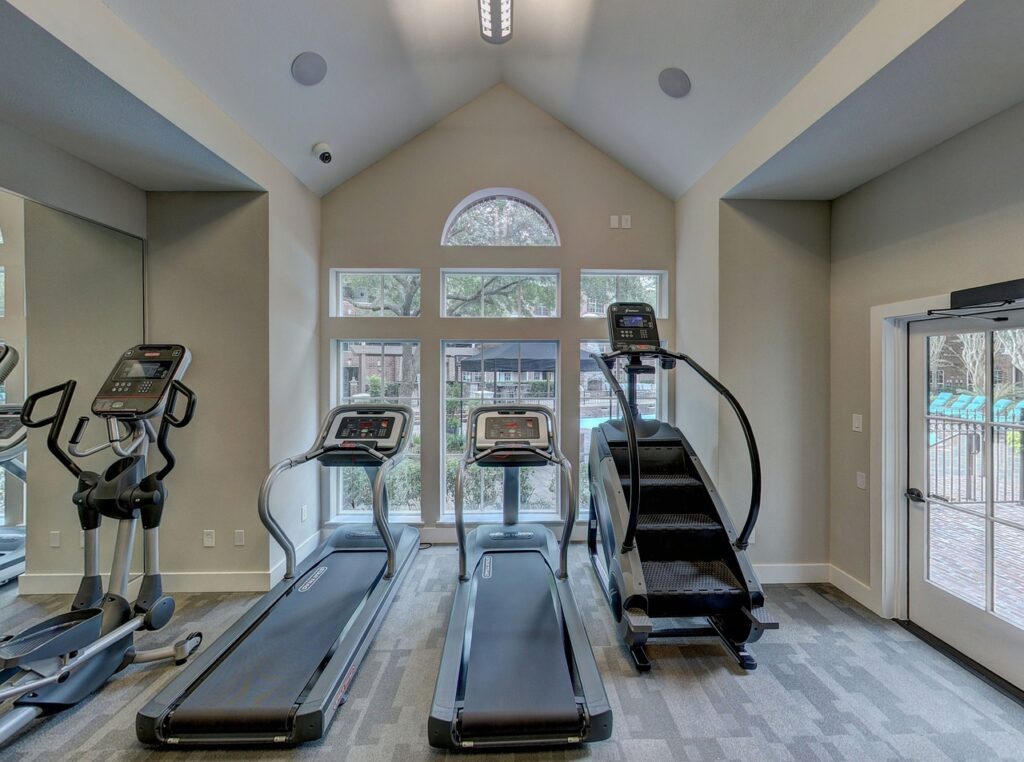
This image is property of pixabay.com.
5. Simulating Outdoor Terrain
For individuals who enjoy outdoor activities but lack access to challenging terrains, the incline and decline features on a treadmill offer an excellent solution. Whether you’re preparing for an outdoor event or simply seeking a change of scenery, these features allow you to simulate various outdoor terrains.
5.1 Hill Climbing Simulation
One of the most notable advantages of the incline feature on a treadmill is its capability to mimic uphill climbs. By raising the incline level, you can replicate the resistance encountered when hiking up a hill or mountain. This simulation not only engages additional muscle groups but also mirrors the intensity of outdoor terrain. Training on an incline prepares you for the physical demands of uphill climbs, allowing you to confidently tackle challenging outdoor trails.
5.2 Downhill Descending Simulation
While uphill climbs have their challenges, navigating steep descents can also be demanding. The decline feature on a treadmill provides the opportunity to simulate downhill descents, allowing you to prepare for the rigors of outdoor terrain. By adjusting the decline level, you can replicate the resistance encountered when descending a hill or mountain, engaging specific muscles and building the necessary strength and control for navigating downhill sections.
5.3 Trail Running Experience
Trail running offers a unique experience, with varying terrains and elevations. The incline and decline features on a treadmill provide a chance to replicate some aspects of trail running, especially for those living in urban or flat areas. By incorporating these features into your treadmill workouts, you can prepare your body for the irregular surfaces and changing elevations often encountered in outdoor trail runs.
6. Improving Balance and Stability
Maintaining good balance and stability is essential for optimal performance and injury prevention. The incline and decline features on a treadmill contribute significantly to improving these vital aspects of fitness.
6.1 Activation of Stabilizing Muscles
Walking or running on an incline challenges your body’s ability to maintain stability, activating the muscles responsible for balance and postural control. To prevent excessive leaning or swaying during uphill climbs, your core muscles, glutes, and leg muscles engage to stabilize your body. This activation of stabilizing muscles improves your balance during movement, preventing falls and enhancing overall stability.
6.2 Enhancing Proprioception
Proprioception, or the body’s ability to sense its position in space, plays a crucial role in balance and stability. The incline and decline features on a treadmill enhance proprioceptive training by introducing variable surfaces. As your body adjusts to the changing terrain, your proprioceptive system becomes more efficient in detecting and responding to shifts in balance. By consistently challenging your proprioceptive abilities, you can improve your overall balance and stability.

This image is property of pixabay.com.
7. Reduced Impact on Joints
High-impact exercises can put stress on your joints, potentially leading to discomfort and injury. The incline and decline features on a treadmill offer a low-impact alternative, allowing you to exercise with reduced strain on your joints.
7.1 Decreased Stress on Knees and Ankles
Walking or running on a flat surface can place a significant amount of stress on your knees and ankles, particularly if you have existing joint issues. By utilizing the incline feature, you reduce the impact on these joints as your feet strike the surface at a more favorable angle. The incline provides cushioning and absorbs some of the shock, allowing for a smoother and gentler movement.
7.2 Minimized Risk of Injuries
Engaging in high-impact activities increases the risk of injuries, such as stress fractures, shin splints, and joint strain. The incline and decline features on a treadmill provide a lower-risk alternative by reducing the impact forces on your body. By incorporating the incline and decline settings, you minimize the chances of overuse injuries and joint strain, making your workouts safer and more sustainable in the long run.
8. Versatile Workouts
The incline and decline features on a treadmill offer versatility in your workouts, accommodating a wide range of exercise styles and preferences.
8.1 Walking
Walking is one of the most accessible forms of exercise, and incorporating incline and decline features on a treadmill can significantly enhance its effectiveness. By adjusting the incline level, you can transform a casual stroll into a challenging hill climb. Whether you’re looking to improve cardiovascular fitness, burn more calories, or strengthen specific muscles, walking on an incline provides a tailored experience to meet your goals.
8.2 Jogging
Jogging is a popular choice for those seeking a higher intensity workout. By utilizing the incline feature on a treadmill, you can intensify your jogging sessions and target specific muscle groups. Whether you want to engage your glutes, quadriceps, or calves, adjusting the incline level allows you to customize your jogging workout to suit your fitness goals.
8.3 Running
Running on a treadmill with incline and decline features provides a dynamic and challenging workout experience. By adjusting the incline level, you can simulate uphill climbs or mountainous terrains, testing your cardiovascular endurance and leg strength. Similarly, utilizing the decline feature can add variety to your runs and engage different muscles as you navigate downhill descents. Running on a treadmill with incline and decline options ensures a stimulating and effective workout.
8.4 HIIT Workouts
High-intensity interval training (HIIT) is a popular exercise method that involves alternating periods of intense effort with short recovery periods. By incorporating incline and decline variations into your HIIT workouts, you can elevate their effectiveness. For example, you can perform high-intensity sprints on an incline, followed by a recovery period on a flat or declining surface. This combination challenges your cardiovascular system, torches calories, and improves overall fitness.
8.5 Endurance Training
If you’re training for an endurance event, such as a marathon or long-distance hike, incorporating incline and decline features on a treadmill is essential. By simulating the challenging inclines and descents you may encounter during the event, you can effectively prepare your body for the demands of the course. This specialized endurance training allows you to build the necessary strength and stamina, ensuring a successful and enjoyable experience.
9. Mental Engagement
Staying mentally engaged during workouts is crucial for maintaining motivation and avoiding boredom. The incline and decline features on a treadmill offer opportunities for heightened mental engagement, making your workouts more enjoyable and stimulating.
9.1 Avoiding Boredom and Monotony
Repetitive workouts can quickly become monotonous, leading to a decline in motivation. The incline and decline features on a treadmill provide an effective solution to combat boredom. By adjusting the incline or decline levels throughout your workout, you introduce variety and excitement. This constant change keeps your mind engaged and focused, preventing workout plateaus and enhancing your overall enjoyment.
9.2 Goal Setting and Tracking Progress
Incorporating incline and decline features into your treadmill workouts allows you to set specific goals and track your progress over time. Whether your goal is to conquer steeper inclines, increase your endurance, or burn a certain number of calories, these features provide tangible milestones to work toward. By monitoring your progress and celebrating your achievements, you stay motivated and maintain a positive mindset throughout your fitness journey.
10. Accommodating Users with Different Fitness Levels
Fitness levels vary among individuals, and the incline and decline features on a treadmill cater to users of all abilities.
10.1 Beginner-Friendly Option
For beginners or individuals with lower fitness levels, utilizing the incline and decline features on a treadmill provides a gentle introduction to exercise. By starting with smaller incline or decline levels, beginners can gradually build endurance and strength without overwhelming their bodies. Beginners can gradually increase the incline or decline over time as they progress, ensuring a safe and effective fitness journey.
10.2 Challenging Advanced Users
Advanced users or athletes can benefit greatly from the incline and decline features on a treadmill. By incorporating steeper inclines and declines into their workouts, advanced users push their limits and continue to challenge their bodies. Whether it’s training for a specific outdoor event or simply looking to intensify their workouts, the incline and decline options provide an advanced level of resistance and difficulty to meet their needs.
In conclusion, the incline and decline features on a treadmill offer numerous benefits to enhance your workouts. From increased difficulty and muscle engagement to improved cardiovascular endurance and calorie burning potential, these features provide a versatile and effective exercise experience. Additionally, they simulate outdoor terrain, improve balance and stability, reduce joint impact, promote mental engagement, and accommodate users with different fitness levels. Whether you’re a beginner or an advanced athlete, incorporating incline and decline variations into your treadmill workouts can help you achieve your fitness goals and elevate your overall exercise routine.


